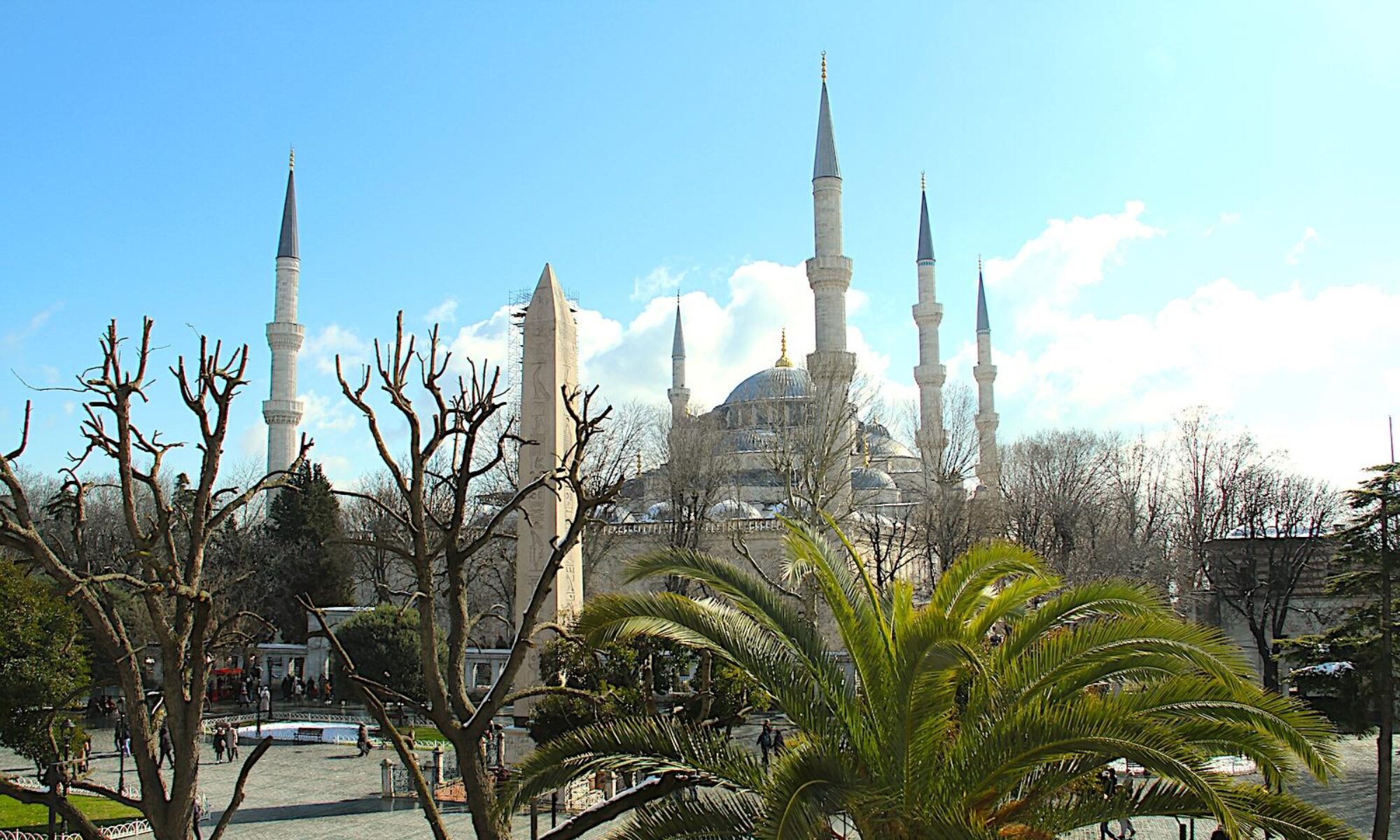Istanbul shopping is where ancient bazaars and modern boulevards coexist in a vibrant urban tapestry. From centuries-old covered markets to sleek avenues lined with international brands, the city offers a diverse range of shopping experiences that cater to every taste and budget. Tourists can immerse themselves in the historical charm of the Grand Bazaar or Divan Yolu, where handwoven carpets, spices, and artisanal crafts transport visitors to the heart of Ottoman commerce. Meanwhile, in trendy districts like Nişantaşı or Bağdat Caddesi, global fashion houses, Turkish designers, and luxury boutiques offer a high-end, cosmopolitan experience reminiscent of Paris or Milan.
Beyond retail, Istanbul’s shopping streets double as cultural and social hubs. Strolling down İstiklal Caddesi, travellers are surrounded by bookstores, music shops, street performers, and art galleries, making it more than just a place to shop. In areas like Moda, Çukurcuma, and Kadıköy, independent shops, vintage stores, and concept cafés reflect the city’s growing creative spirit. Whether seeking elegant fashion, unique antiques, or simply a lively place to wander, Istanbul’s shopping streets offer more than just products; they deliver atmosphere, history, and an authentic taste of local life.
Below is a description of each of the ten most important shopping streets in Istanbul, including their retail and entertainment offerings:
Top 10 Istanbul Shopping Streets – Table of Contents
Top 10 Istanbul Shopping Streets
İstiklal Caddesi – Beyoğlu
Location: The northern end of İstiklal Caddesi begins at Taksim Square, and the southern end is approximately at the Beyoğlu Tünel (F2). However, there are considerably more retail opportunities going down the hill to the Galata Tower. Convenient metro stops are Taksim Square (M2) and Şişhane (M2).
Stretching approximately 1.4 km from Taksim Square to Galata, İstiklal Caddesi is Istanbul’s most iconic pedestrian shopping street. The avenue is lined with global fashion brands (such as Zara and H&M), historic arcades (like Hazzopulo and Atlas Pasajı), bookstores (like Pandora and Homer), and vintage music shops. It’s also home to cultural venues like Salt Beyoğlu, the Türkiye İş Bankası Painting and Sculpture Museum, the Meşher Art Gallery, and several cinemas. Trendy side streets such as Asmalımescit and Nevizade lead to bars, rooftop terraces, and meyhanes. The nostalgic red tram and 19th-century architecture give it a uniquely European flair amidst the constant buzz of both locals and tourists.
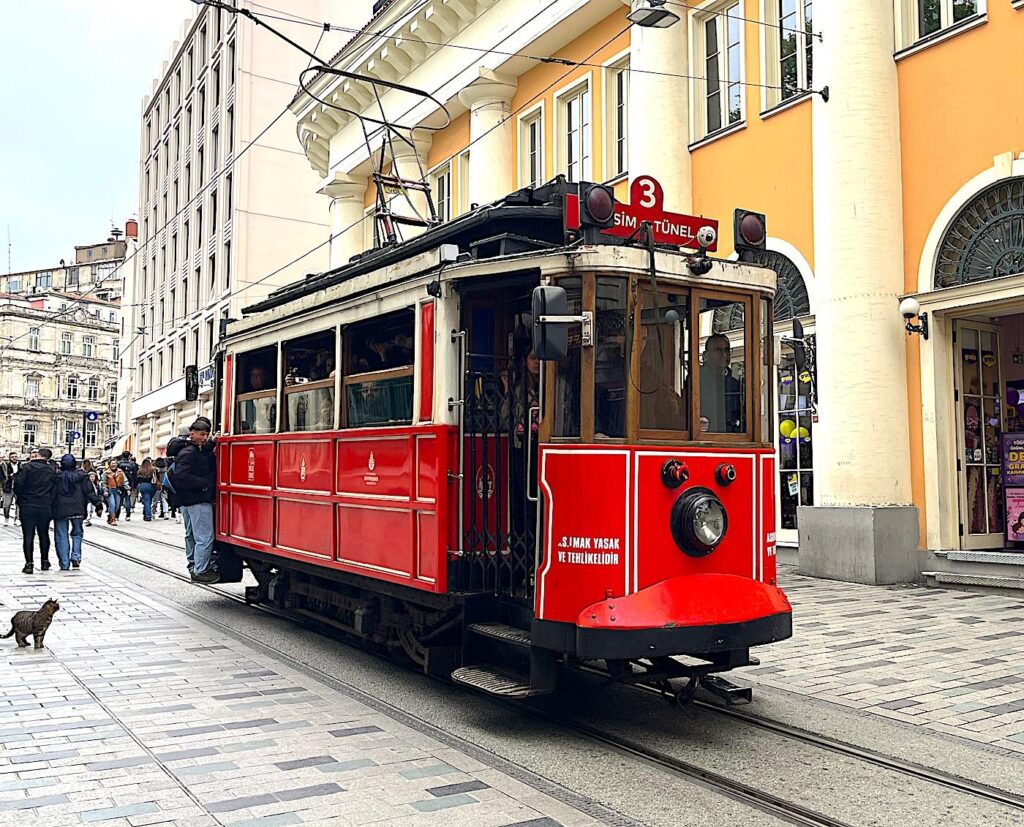
Bağdat Caddesi – Kadıköy (Asian Side)
Location: The best shopping experience on Bağdat Caddesi is concentrated in the section between Kızıltoprak and Suadiye, a stretch of about 2.5 kilometres. This area is the most upscale and vibrant part of the avenue, offering a refined, walkable environment with a wide range of high-end fashion stores, elegant cafés, beauty salons, and lifestyle boutiques. The closest public transportation hub is at Söğütlüçeşme, serving the Metrobus and Marmaray. Other convenient Marmaray stops are at Feneryolu and Suadiye.
This grand 14-kilometre boulevard runs parallel to the Marmara coastline, stretching from Kızıltoprak to Maltepe. It’s a shopper’s paradise on the Asian side, renowned for its high-end Turkish and international fashion labels (Vakko, Beymen, Massimo Dutti), elegant home decor stores, and large malls like İstMarina and Piazza, located nearby. The area is filled with stylish cafés, gourmet patisseries, and fine dining restaurants. With its wide sidewalks, lush trees, and nearby parks, Bağdat Caddesi is also popular for weekend strolls, cycling, and people-watching in a high-income, refined environment.
Start at Kızıltoprak, which marks the beginning of the prime section. Here, there are flagship stores like Vakko, Beymen Club, and major international brands such as Zara, Massimo Dutti, and H&M. The central section around Caddebostan is the liveliest, featuring concept stores, bookstores (like Remzi Kitabevi), and popular cafés like MOC and Starbucks Reserve. It’s also dotted with luxury watches and jewellery shops. End at Suadiye, which has a slightly more residential feel but still features stylish boutiques and some quieter cafés. The nearby Suadiye Beach Park and Seaside Promenade are ideal for relaxing after a shopping trip.
Galataport Istanbul – Beyoğlu
Location: Galataport is northeast of the Karaköy ferry piers and is served by the T1 tram line, with the closest station at Tophane (T1).
Galataport Istanbul is a transformative waterfront development in the Karaköy district, spanning approximately 400,000 square metres along a 1.2-kilometre stretch of the Bosphorus. The shopping area encompasses around 52,000 square meters, featuring over 250 retail outlets and dining establishments. Visitors can explore a diverse array of shops, from international fashion brands like Beymen and Vakko to local boutiques and artisanal stores housed in the restored Paket Postanesi building.
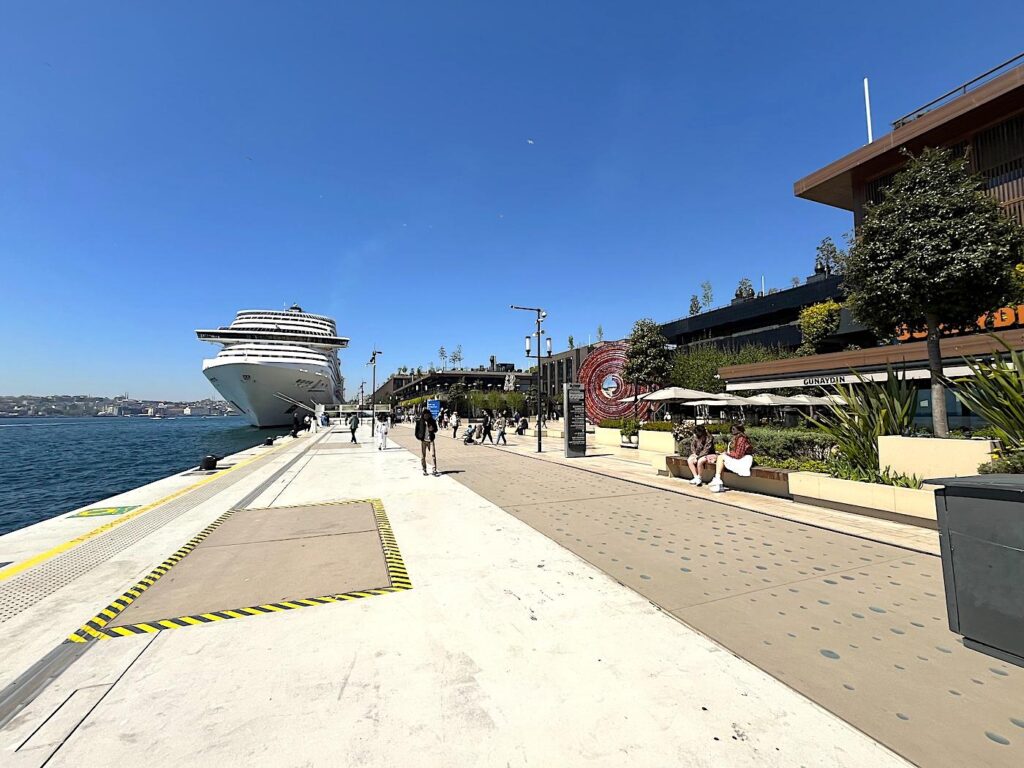
The complex also offers a rich culinary scene, including renowned Turkish eateries such as Hafız Mustafa and contemporary venues like Salt Bae Burger and Vakkorama Café. Beyond shopping and dining, Galataport is a cultural hub, home to the Istanbul Museum of Modern Art and the Mimar Sinan University Museum of Painting and Sculpture, providing a comprehensive experience that blends retail, gastronomy, and art.
Abdi İpekçi Street – Nişantaşı
Location: The north end of Abdi İpekçi Cd. is at Hafız Mustafa 1864 Nişantaşı and runs south to Maçka Park and Maçka Gondola Station. The closest Metro Station is Osmanbey (M2), the area is well served by buses including, the 30A and 30M.
Abdi İpekçi was a prominent Turkish journalist and editor-in-chief of Milliyet newspaper, known for his advocacy of democracy and press freedom, who was assassinated on February 1, 1979, by a member of the far-right militant group Grey Wolves.
Running for about 600 meters through the heart of the Nişantaşı district, Abdi İpekçi Street is Istanbul’s luxury shopping mecca. Here, you’ll find the flagship stores of international designer brands, including Chanel, Louis Vuitton, Prada, and Rolex, alongside upscale Turkish fashion labels such as Vakko and Beymen Club. The street is home to refined restaurants, art galleries, and stylish cocktail bars, attracting Istanbul’s elite. It also connects to nearby Maçka Park and the elegant Ottoman-era Teşvikiye Mosque, offering moments of serenity amid high fashion.
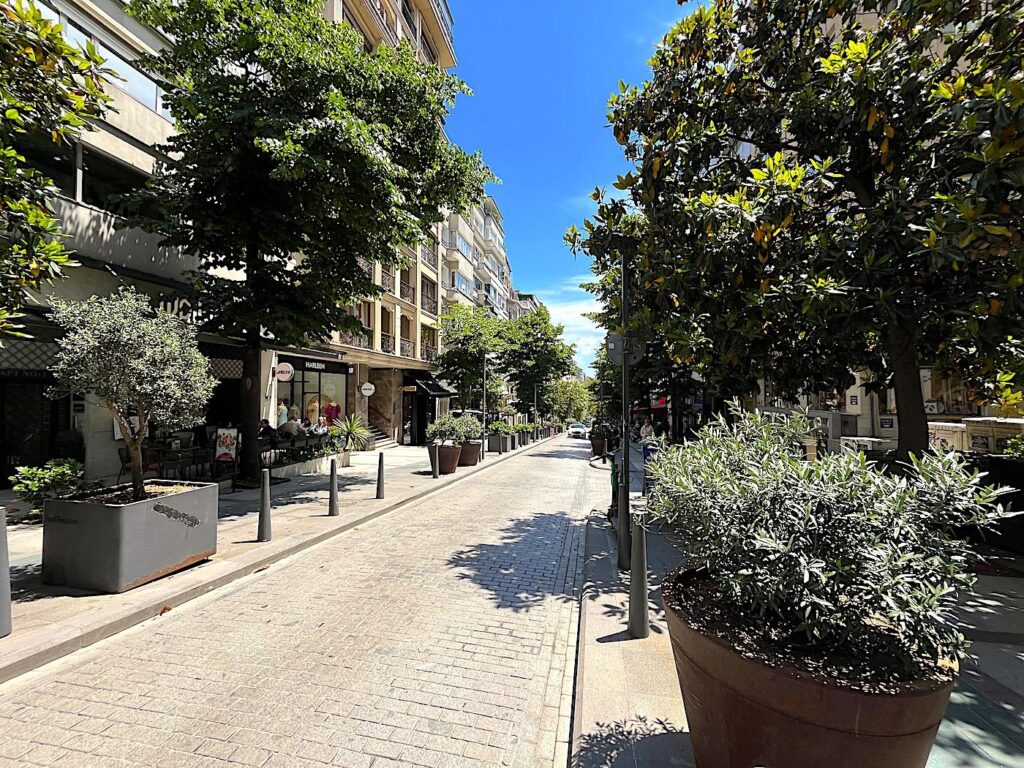

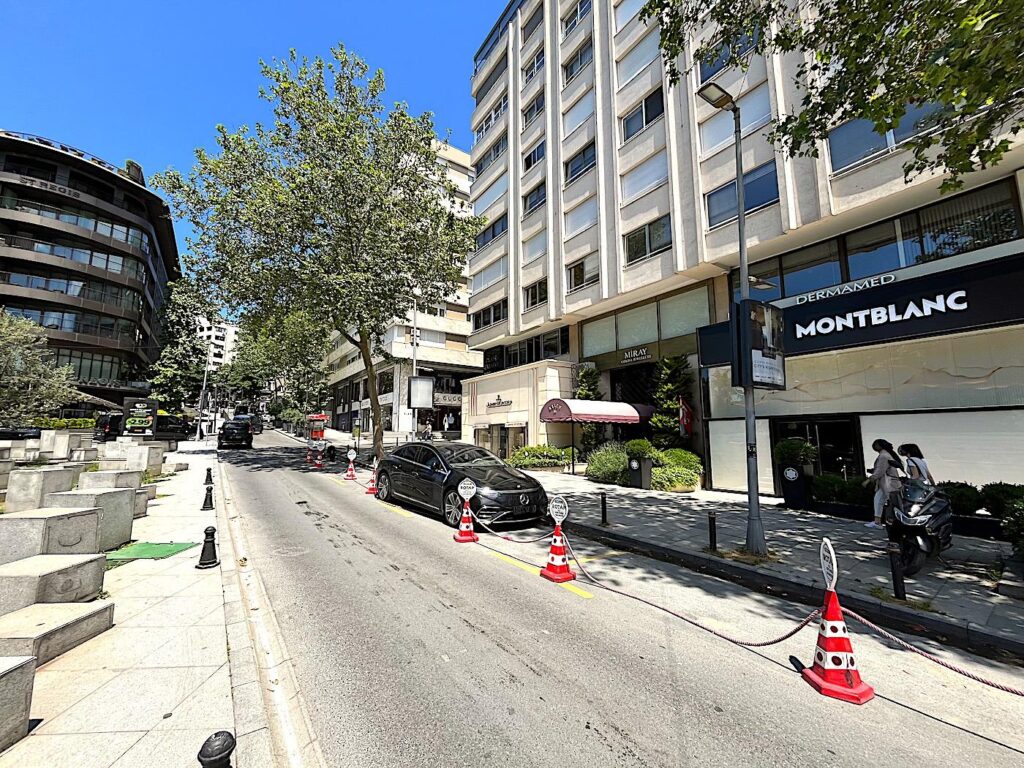
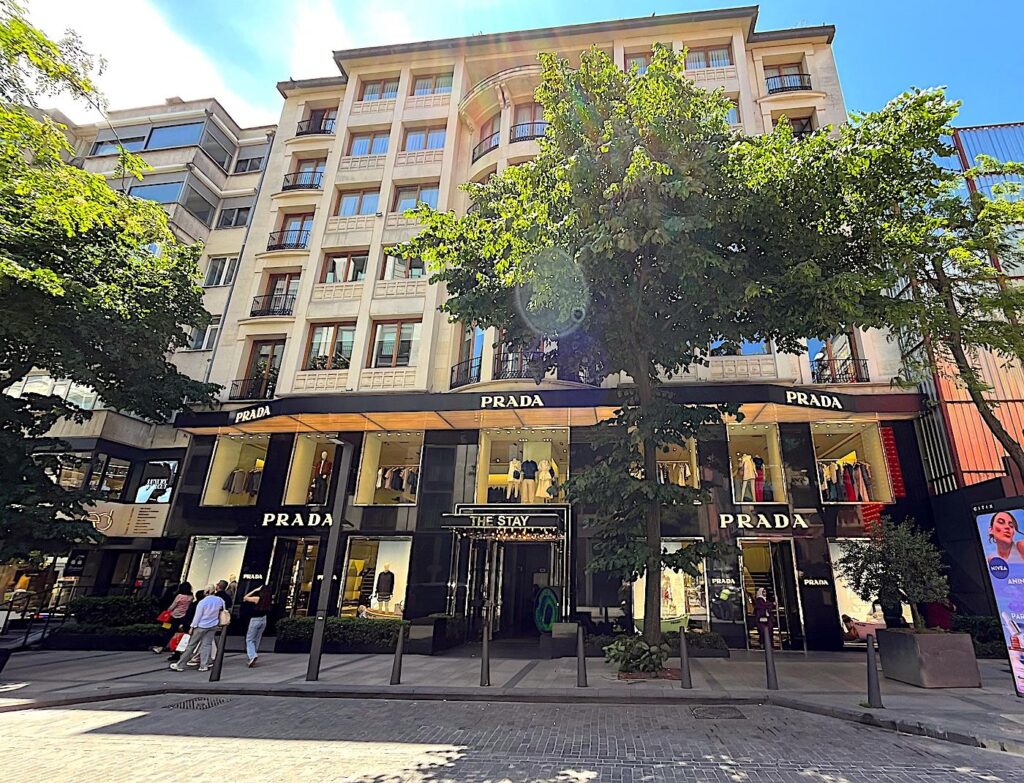

Valikonağı Caddesi – Nişantaşı
Location: The west end of Valikonağı Caddesi is at the Harbiye Military Museum and runs northeast to The Ritz-Carlton Residences. The closest Metro Station is Osmanbey (M2), the area is well served by buses, including the 30A and 30M.
Extending from the Harbiye Military Museum to central Nişantaşı, Valikonağı Caddesi spans about 1 km, running at a right angle to Abdi İpekçi Street. It’s a busier road than that of Abdi İpekçi, and not as upscale, but it still features bridal boutiques, Turkish designer outlets, and several bespoke tailoring shops. You’ll also find delicate patisseries, such as Baylan, and chic bistros. The street has a residential atmosphere, featuring well-maintained apartment buildings, some greenery, and discreet luxury in both retail and dining establishments.
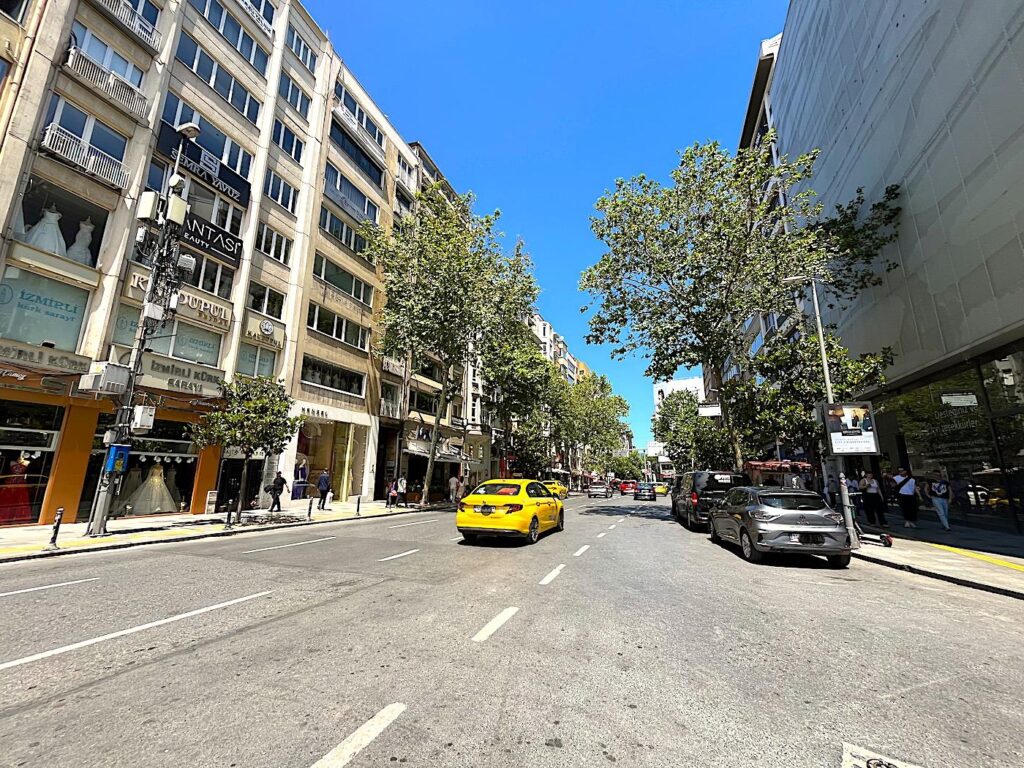
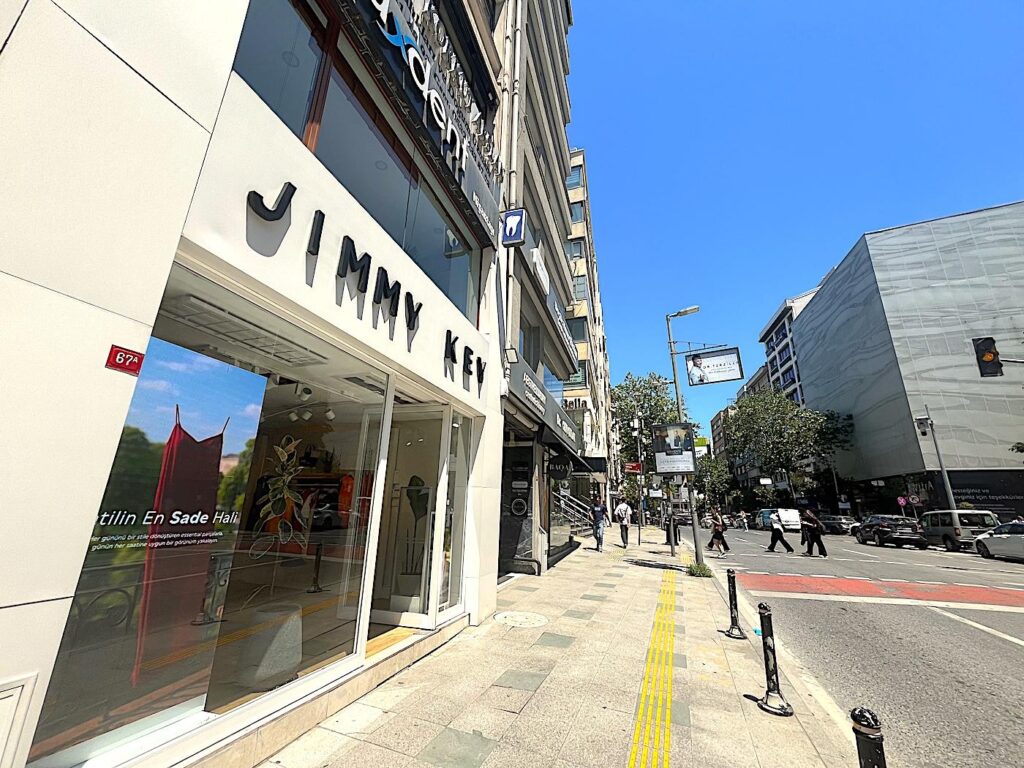
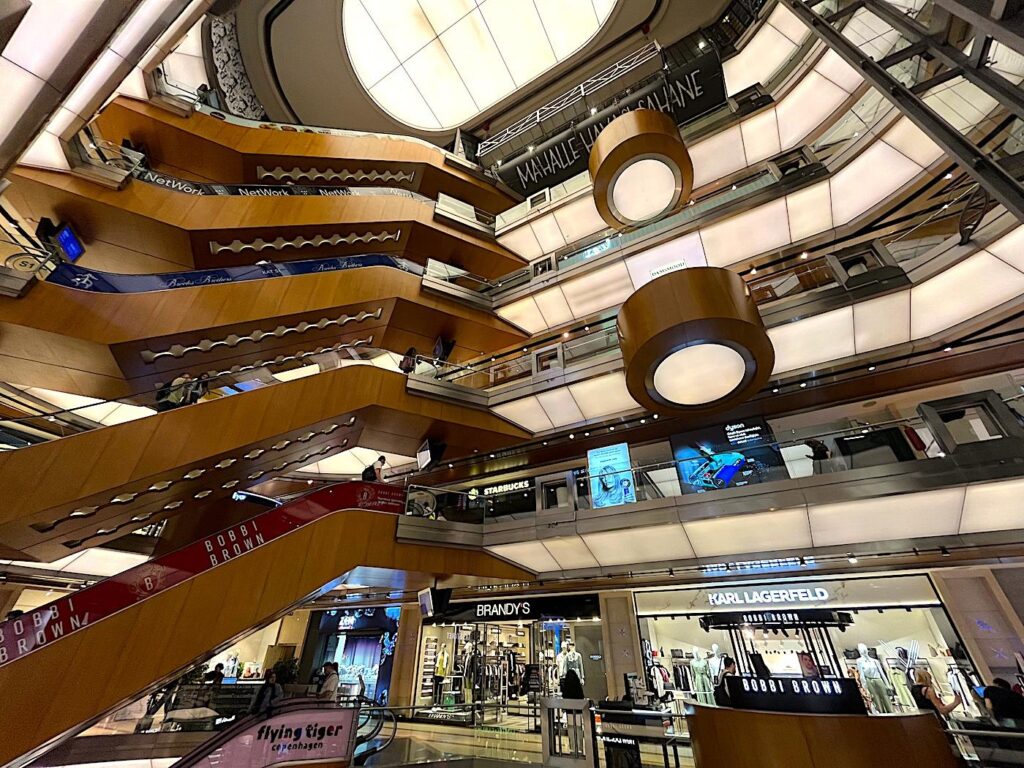
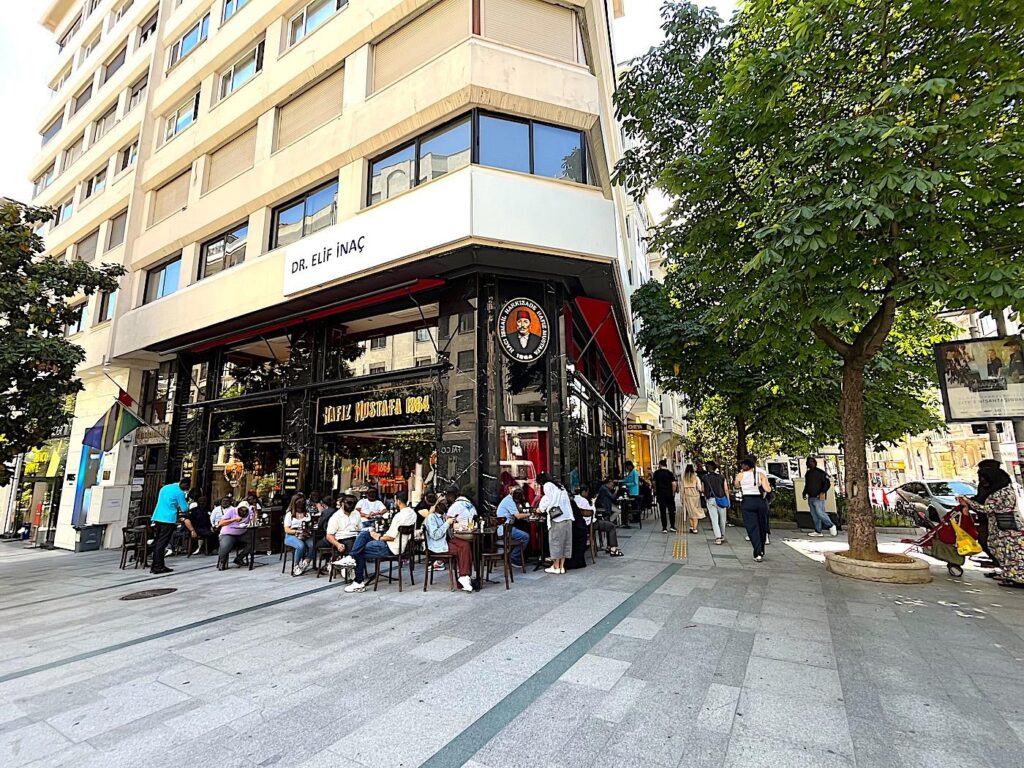

Halaskargazi Street – Şişli
Location: The southern end of Halaskargazi Street is situated near the Uğur Mumcu Memorial, close to the Harbiye Military Museum, and runs north to Şişli Mosque. Metro Stations along the street are Osmanbey (M2) and Şişli-Mecidiyeköy (M2).
This busy 2.5 km avenue connects Harbiye to Mecidiyeköy and is a major commercial thoroughfare. It’s packed with department stores (Boyner, LC Waikiki), electronics shops, sportswear outlets, and pharmacies. Office towers and hotels line the street, catering to workers and budget-conscious shoppers. While not especially touristy, it offers authentic local energy and is just beyond the Şişli centre, where Halaskargazi Cd. becomes Büyükdere Cd., is İstanbul Cevahir Mall; one of Europe’s largest.


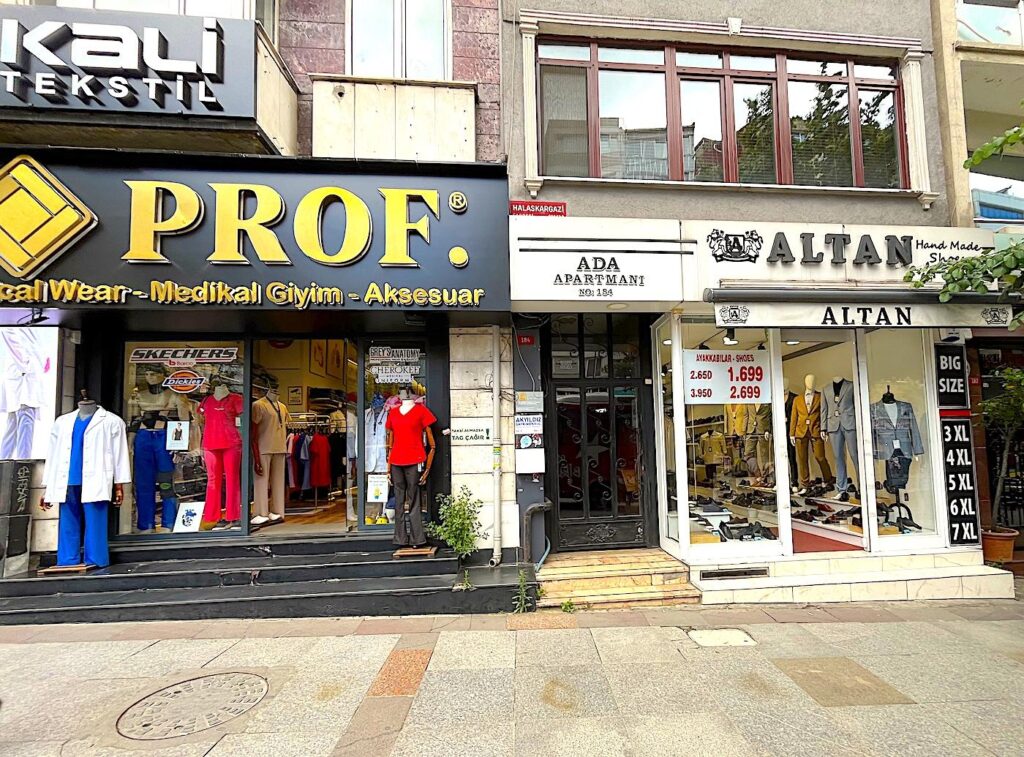

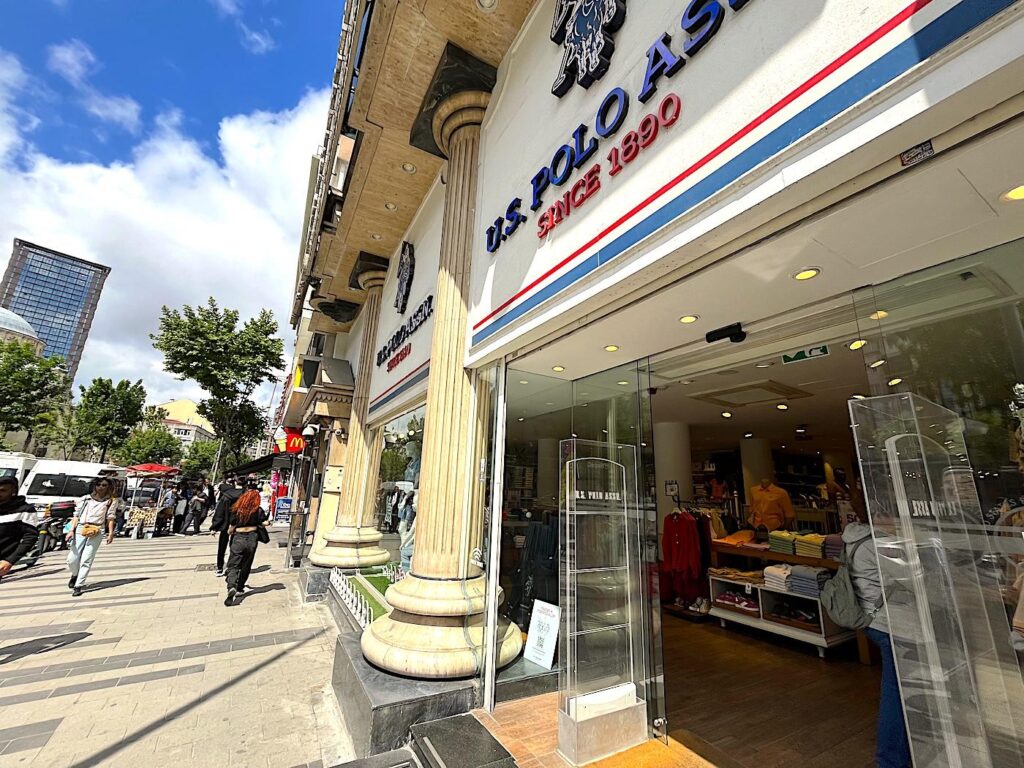
Ortaköy Streets & Square
Location: Ortaköy Square is located directly adjacent to the Bosphorus in the northeast part of Beşiktaş. There are no metro stations in proximity to Ortaköy, although several major bus routes run through the area, including the DT1 and DT2. The square features a ferry pier, offering services to and from Kadıköy and Eminönü.
While not a single street, the Ortaköy area near the Bosphorus Bridge features a compact, walkable market zone, filled with souvenir stalls, jewellery vendors, artisanal markets, and boutique shops. Its cobbled lanes are brimming with energy, especially on weekends. Popular with both locals and tourists, Ortaköy is renowned for its waterfront cafés, stunning views of the Ortaköy Mosque and Bosphorus Bridge, and street foods such as kumpir (stuffed potatoes) and waffles. At night, it comes alive with bars and hookah lounges.

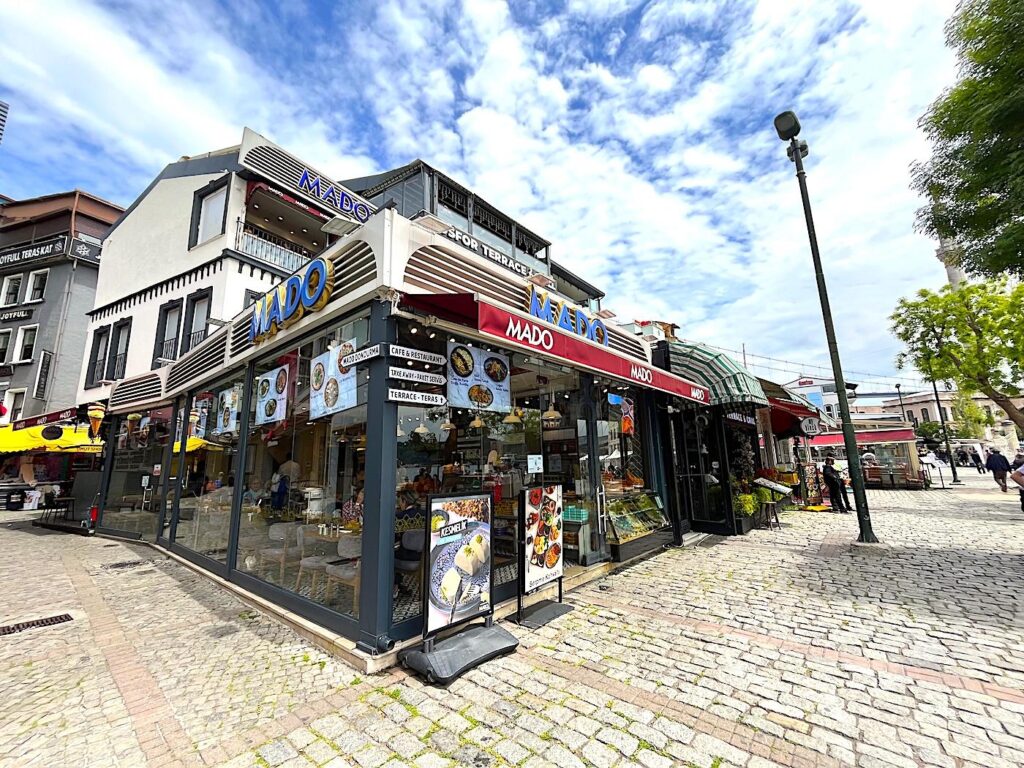
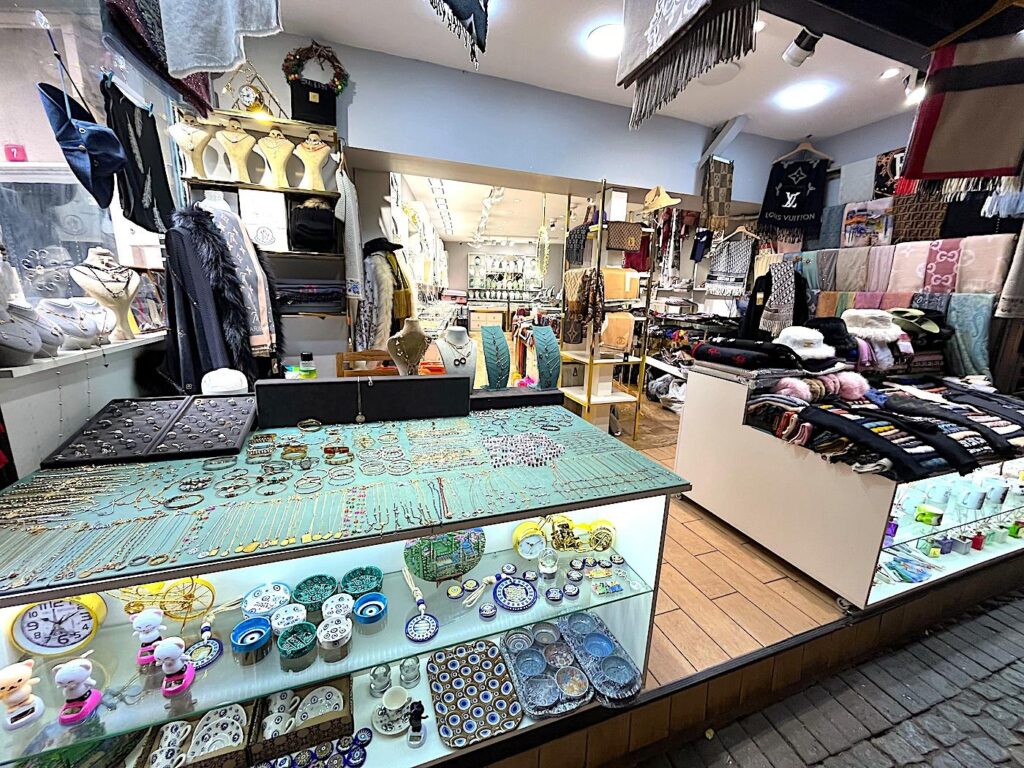
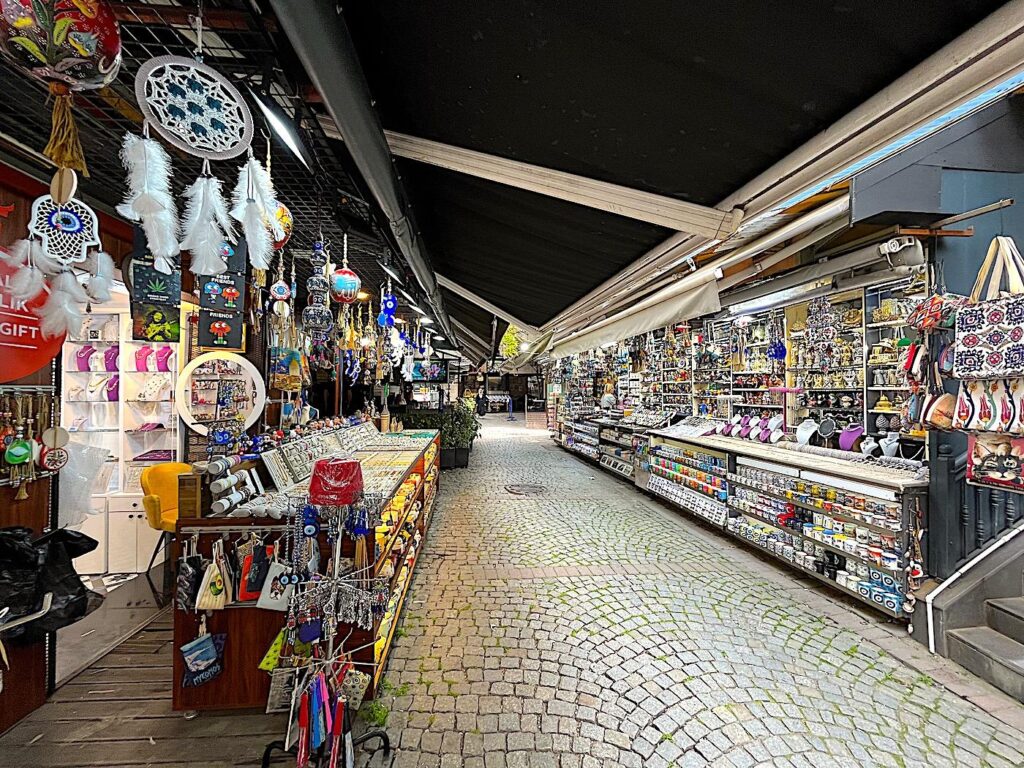
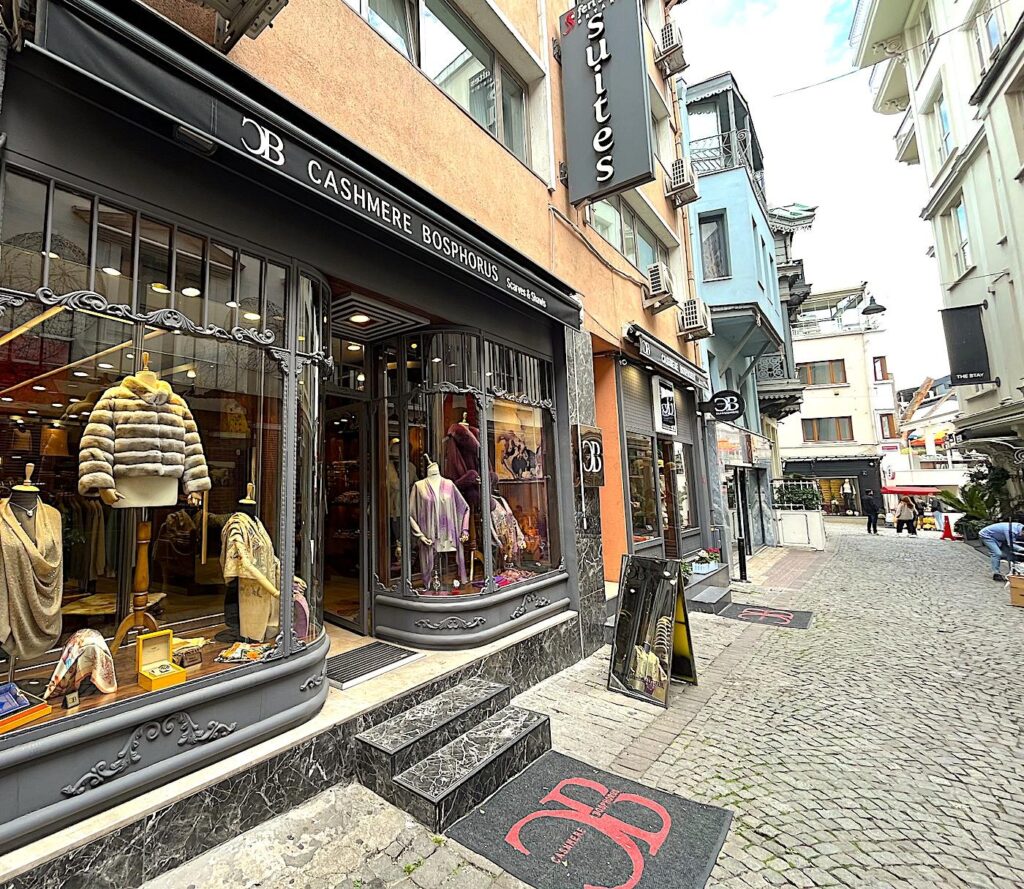
Divan Yolu Street – Sultanahmet
Location: Divan Yolu Cd., in the heart of the historic region of Istanbul, runs from Çemberlitaş Hamamı in the west to the Sultanahmet Park/Stone of Million in the east. It is served by the T1 tram line, with stations at Çemberlitaş (T1) and Sultanahmet (T1).
Divan Yolu (“Road of the Imperial Council”) is about 1 km long and dates back to Roman times. It links Beyazıt Square to Sultanahmet and is one of the most historic shopping streets in Istanbul. It primarily caters to tourists, offering shops that sell carpets, ceramics, lamps, spices, and Turkish delight. Traditional cafés, such as Pierre Loti, and historic hans, like the Çemberlitaş Hamam, offer cultural immersion. It’s lined with domes and minarets, making shopping here a distinctly Ottoman experience.
Çukurcuma Street – Cihangir/Beyoğlu
Location: On the northeast end of the street at the top of the hill is the Ömer Ağa Çeşmesi (fountain), and at the southwest lower end of the street is Boğazkesen Cd. While some distance from public transport, the nearest metro stops are Taksim Square (M2) and Şişhane (M2).
Running for about 500 meters, Çukurcuma is a winding, hilly street known for its antique stores, vintage furniture, and art spaces. This charming neighbourhood has become a haunt for collectors and interior designers. It’s also home to Orhan Pamuk’s Museum of Innocence, adding literary and conceptual depth. Quaint cafés and secondhand bookstores dot the area, giving it a nostalgic, bohemian atmosphere that attracts both Istanbul’s creative class and curious visitors.
Moda Street – Kadıköy (Asian Side)
Location: Starting at Osman Aga Mosque (Üzerlik Sk), the road runs directly north to south to Moda Pier. At the top of the street is the Çarşı (T3) tram stop, and the Kadıköy ferry piers are 400 metres to the west.
Running from the centre of Kadıköy down to the seaside, Moda Street spans around 1.5 kilometres and is the creative heart of Kadıköy. It’s dotted with vinyl record stores, indie fashion boutiques, small bookstores, and locally owned artisan shops. Popular with students, artists, and young professionals, Moda is also famed for its seaside tea gardens, ice cream parlours (notably Ali Usta), and sunset views over the Princes’ Islands. Street musicians and sketch artists often animate the area.
Other Notable Istanbul Shopping Streets
Grand Bazaar Area – Beyazıt
Location: Kalpakçılar Caddesi runs from Beyazıt Camii in a west to east direction through the southern part of the Grand Bazaar to Nuruosmaniye Camii, where it becomes Nuruosmaniye Caddesi and continues to Cağaloğlu Hamamı on Prof. Kazım İsmail Gürkan Cd. The west end of the route is close to the Beyazıt-Kapalıçarşı (T1) tram stop, and the east end is nearest to the Gülhane (T1) tram stop.
While the Grand Bazaar itself spans over 30,000 square meters, its surrounding shopping streets, such as Kalpakçılar Caddesi and Nuruosmaniye Caddesi, are equally important. This dense labyrinth of around 60 covered streets is packed with over 4,000 shops selling jewellery, carpets, leather goods, textiles, spices, and antiques. It’s both a commercial engine and a tourist magnet. The centuries-old structure includes inns (hans), mosques, and workshops. Outside, you’ll find tea houses, small mosques, and historic inns, making it a sensory experience of Ottoman Istanbul.
Akaretler Row Houses – Beşiktaş
Location: Akaretler encompasses Süleyman Seba Cd. and Şair Nedim Cd. in Beşiktaş. There are no metro or tram lines nearby; however, the Beşiktaş ferry pier is accessible, and the area is well-served by buses, including the 30M and DT2.
Akaretler, a compact yet stylish street complex spanning approximately 300 meters, is renowned for its restored Ottoman-era row houses, which now house luxury concept stores, design showrooms, and boutique cafés. Turkish designers, art pop-ups, and fine dining venues, such as Vogue and W Istanbul, draw a fashionable crowd. The proximity to Maçka Park and Dolmabahçe Palace makes this a hub for design lovers and urban explorers alike. Adjacent to Akaretler are the retail and entertainment lanes of Beşiktaş.
Serasker Street – Kadıköy Market Area
Location: Serasker Street begins at its western end in the centre of Kadıköy Çarşı and extends eastward to Bahariye Cd. The west end is close to Kadıköy Metro (M11), and Kadıköy Ferry Piers and at the east end is Altıyol (T3) tram stop.
At the core of the Kadıköy Çarşı (market), Serasker Street and its surroundings stretch for about 400 meters, offering an eclectic mix of fashion boutiques, gift shops, tattoo parlours, and retro toy stores. It’s the pulse of Kadıköy’s youth culture. Street art and murals decorate building walls, and coffee shops spill onto the sidewalks. In the evenings, the area around Barlar Sokağı comes alive with music, beer, and the artsy, alternative vibe that defines modern Kadıköy.
See also: LikeTürkiye.com Best of Istanbul – Top 10 Istanbul Shopping Malls
